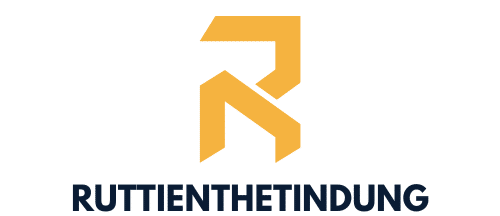Cities are living entities, constantly evolving in response to the changing needs and aspirations of their inhabitants. As the urban landscape grows, the importance of urban renewal becomes more apparent. This process is multifaceted, involving the revitalization of city areas that have fallen into decline, reimagining them through sustainable development to meet current and future demands. Urban renewal’s complex nature requires a systematic evaluation of land areas, which can be bolstered by robust models and methods. In this light, the sustainable urban development approach has emerged as a key strategy in reshaping cities, with countries like China leading with innovative models.
The tapestry of urban renewal weaves together social, economic, and environmental threads, demanding comprehensive analysis. Scholars have developed various indicators and methods to assess the effectiveness of renewal projects, with tools like the entropy weight method helping in decision-making. The integration of sustainability into urban development is no longer optional but vital for the well-being of current and future generations.
Topic to read : The influence of infrastructure on property values
This article will delve into the core components of urban renewal, from its evaluation and sustainable practices to the models and policies shaping its trajectory. By understanding the dynamics of the process, you will gain insights into the strategic considerations that underpin successful urban regeneration efforts, whether you are a policy-maker, a scholar, or an engaged citizen.
The Evaluation of Urban Renewal
Urban renewal is not merely about construction and redevelopment; it is an intricate process that requires thorough evaluation. This involves assessing the condition of the land area, the needs of the community, and the potential for sustainable growth. Evaluation is the cornerstone of effective urban renewal, ensuring that projects are not only viable but also beneficial to the social and economic fabric of the city.
Additional reading : What is the impact of artificial intelligence on real estate pricing?
Understanding the Land and Its Potential
At the heart of urban renewal is the land itself. Before any project commences, experts conduct a detailed analysis of the area under consideration. This includes evaluating the current state of infrastructure, the environmental quality, and the socio-economic characteristics of the region. Such an analysis lays the groundwork for identifying the key challenges and opportunities that the renewal project would address.
Integrating Sustainability into Urban Land Evaluation
Sustainability now plays a pivotal role in the evaluation of urban land. The goal is to create spaces that are environmentally friendly, economically viable, and socially inclusive. Evaluators use various sustainability indicators to measure the potential impact of a renewal project. For example, they look at the potential for energy efficiency, the use of green spaces, and the capacity for public transport to reduce carbon emissions.
The Role of Models and Methods in Evaluation
Sophisticated models and methods are employed to analyze and forecast the impact of urban renewal projects. One such model is the entropy weight model, which uses data variance to determine the weight of different indicators in the evaluation process. This method helps decision-makers prioritize the aspects of sustainability that are most critical to the project’s success.
Urban Renewal in China: A Model for Sustainable Development
China has been at the forefront of integrating sustainability into urban development. Its rapid urbanization has necessitated a unique approach to renewal, making it an interesting case study for sustainable urban development. The Chinese model emphasizes the balance between modernization and the preservation of the cultural and historical identity of city areas.
China’s Approach to Urban Renewal
China’s urban renewal strategy employs a comprehensive set of policies and frameworks that prioritize sustainable development. The Chinese government has recognized that urban growth must be managed in a way that ensures long-term socio-economic and environmental health. Through this recognition, a clear policy direction that fosters sustainable urban regeneration has been established.
Sustainable Projects and Their Success Metrics
In analyzing China’s renewal projects, one can see the application of various sustainability measures. Projects often incorporate green building practices, promote public transportation, and aim to improve the quality of life for residents. The success of these projects is judged not just by their economic returns but also by their environmental and social outcomes.
Learning from China’s Urban Renewal Experiences
The rest of the world can learn a lot from China’s experiences in urban renewal. The country’s approach demonstrates the importance of a strong policy framework, the integration of advanced technological solutions, and the need for community engagement in the renewal process. Other nations, including the United States, are looking to adapt China’s model to suit their own urban landscapes.
The Social Impact of Urban Renewal
Urban renewal projects have the power to transform not just the physical space but also the social dynamics of an area. The social aspect of urban renewal encompasses a range of factors from housing and community services to crime rates and educational opportunities.
Addressing Social Equity in Urban Renewal
One of the most significant challenges in urban renewal is ensuring that the benefits of development reach all members of the community. Renewal projects must be designed with social equity in mind, providing affordable housing options and access to essential services. This is where robust social indicators come into play, guiding the development to meet the diverse needs of the urban population.
Engaging Communities in the Renewal Process
Community engagement is vital to the success of any urban renewal project. Residents should have a say in the changes that will affect their neighborhoods. Public consultations and participatory planning sessions are effective ways to incorporate community insights into the renewal strategy. This inclusive approach helps to build a sense of ownership among the residents, fostering a more cohesive and resilient community.
The Long-term Social Benefits
Successful urban renewal projects can yield extensive long-term social benefits. These include improved health outcomes due to better living conditions, increased social cohesion as a result of shared public spaces, and enhanced economic opportunities through job creation and upskilling. Measuring these outcomes often involves longitudinal studies, which track the impact of renewal over time.
Economic Considerations in Urban Renewal
The economic dimension of urban renewal is equally important. It involves financing the projects, ensuring they stimulate the local economy, and evaluating their long-term economic sustainability.
Funding and Financing Urban Renewal Projects
Securing funding for urban renewal can be challenging. Projects require significant investment, often involving a mix of public and private financing. Innovative funding models, such as public-private partnerships (PPPs), have emerged as effective tools for financing renewal projects. Authorities also leverage tax incentives and grants to encourage investment in urban redevelopment.
Economic Revitalization through Urban Renewal
A key objective of urban renewal is to revitalize economically underperforming areas. This involves creating new business opportunities, improving infrastructure to attract investment, and upskilling the local workforce. An economically revitalized area can become a hub of activity, drawing in residents, businesses, and visitors, and contributing to the wider city economy.
Measuring Economic Outcomes and Sustainability
The measurement of economic outcomes is essential to evaluate the success of renewal projects. Metrics such as job creation rates, property values, and business growth are commonly used. However, the focus is also on ensuring the long-term economic sustainability of the area, which aligns with the broader goals of sustainable development.
The Methodological Framework for Urban Renewal
The methodological aspect of urban renewal involves the tools, techniques, and frameworks that guide the planning, implementation, and evaluation processes. This is where concepts like the entropy weight method become relevant, offering a structured approach to decision-making.
Decision-Making Tools for Urban Renewal
Tools such as Geographic Information Systems (GIS) and the entropy weight method are instrumental in analyzing data and making informed decisions about urban renewal. They help in assessing various options, considering the trade-offs, and determining the best course of action based on weighted criteria.
The Entropy Weight Method Explained
The entropy weight method is a decision-making tool that uses the concept of entropy from information theory to determine the importance, or weight, of different criteria. In the context of urban renewal, it allows for an objective analysis of various indicators, such as environmental impact, economic viability, and social inclusion, ensuring a balanced and evidence-based approach to development.
Incorporating Sustainability into Methodology
Sustainability must be at the core of any methodological framework for urban renewal. This means that evaluation methods should not only measure the immediate outcomes but also consider the long-term environmental and social impacts of renewal projects. By doing so, sustainability becomes an integral part of the strategic planning and evaluation of urban redevelopment efforts.
In conclusion, urban renewal is a multifaceted process that necessitates careful planning, inclusive policies, and innovative methodologies. Through the lens of models like those adopted in China, the integration of social, economic, and environmental considerations in urban redevelopment, and the use of analytical tools like the entropy weight method, cities can achieve a balance between modernization and sustainability. As we move forward, it is imperative that urban renewal strategies not only respond to immediate needs but also anticipate and shape the future dynamics of our cities, ensuring they remain vibrant, resilient, and life-affirming spaces for all their inhabitants.











